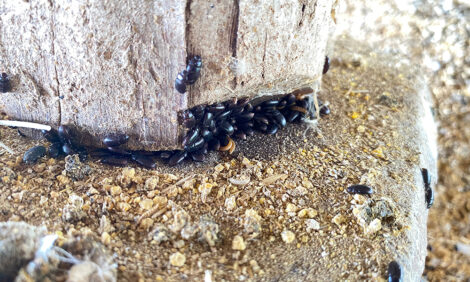



Chick quality vital to no-antibiotics-ever success, consultant says
Focusing on chick quality from the moment eggs enter the incubator is critical to ensuring birds have the best chance of being healthy and productive in no-antibiotics-ever (NAE) systems.Donna Hill, PhD, of Donna Hill Consulting, said rearing strong chicks is critical to the success of NAE systems, as weak birds are more likely to succumb to bacterial challenges and other issues in the field.
And without the support of antibiotics to back them up, birds in these systems risk sacrificing growth for survival, resulting in less-developed chicks which expend more energy on hatching, and higher mortality rates.
“Incubation is a growth equation,” she told Poultry Health Today. “The better job you do with incubation, the better developed the embryo is at harvest.”
If chicks are weak and lack the strength to hatch quickly, they can go into anaerobic respiration, she warned, with the effect being like an endurance runner who “hits the wall.”
“They hatch and they live, but they’re going to die out in the field,” she said. “They’re going to be susceptible to anything, such as bacterial challenge.”
And without antibiotics to prop those weaker chicks up, 1-week mortality will increase, she added.
Meanwhile, chicks that do survive will be slower to develop their immune system and have lower breast-meat yield. “You’re basically sacrificing growth for survival,” she said.
To ensure chick development isn’t delayed, Hill said it is important that producers ensure eggs are kept in optimal warm and humid conditions from the first week — something multi-stage systems often fail to do.
“[In the US] we don’t have the experience of the single-stage,” she explained. “So people are lowering their incubator temperatures because they’re measuring these hot temperatures on the end of incubation.
“But when you lower that temperature [during the first week of incubation in multi-stages] you’re also too cool.
“So you have a system that’s not supporting them in the beginning, and it’s made worse by too low a set point. And so you end up with chicks that basically look normal…But they’re about a centimeter too small.”
Beyond the incubation process, Hill said one of the most important elements is to maintain chick body temperature to an optimum 104° F-105° F. The floor in the breeding house is key to this, she added.
“Young breeder flocks require more heating time than older breeder flocks, because it all depends on their development of their thermo-regulatory system.
“The more poorly developed chick you put in the house…the more you have to prop that chick up in the house by increasing the floor temperature.”
Without the support of antibiotics in NAE systems, Hill said she always takes rectal temperatures of chicks, as well as temperatures of eggs and the machine in the hatcher to make sure they’re as expected.
“Every misstep you take in antibiotic-free tells you that you’ve made a mistake, and so you have to support the temperature of the chick,” she added. “You have to have the best chick possible when you’re placing them on the farm.”












